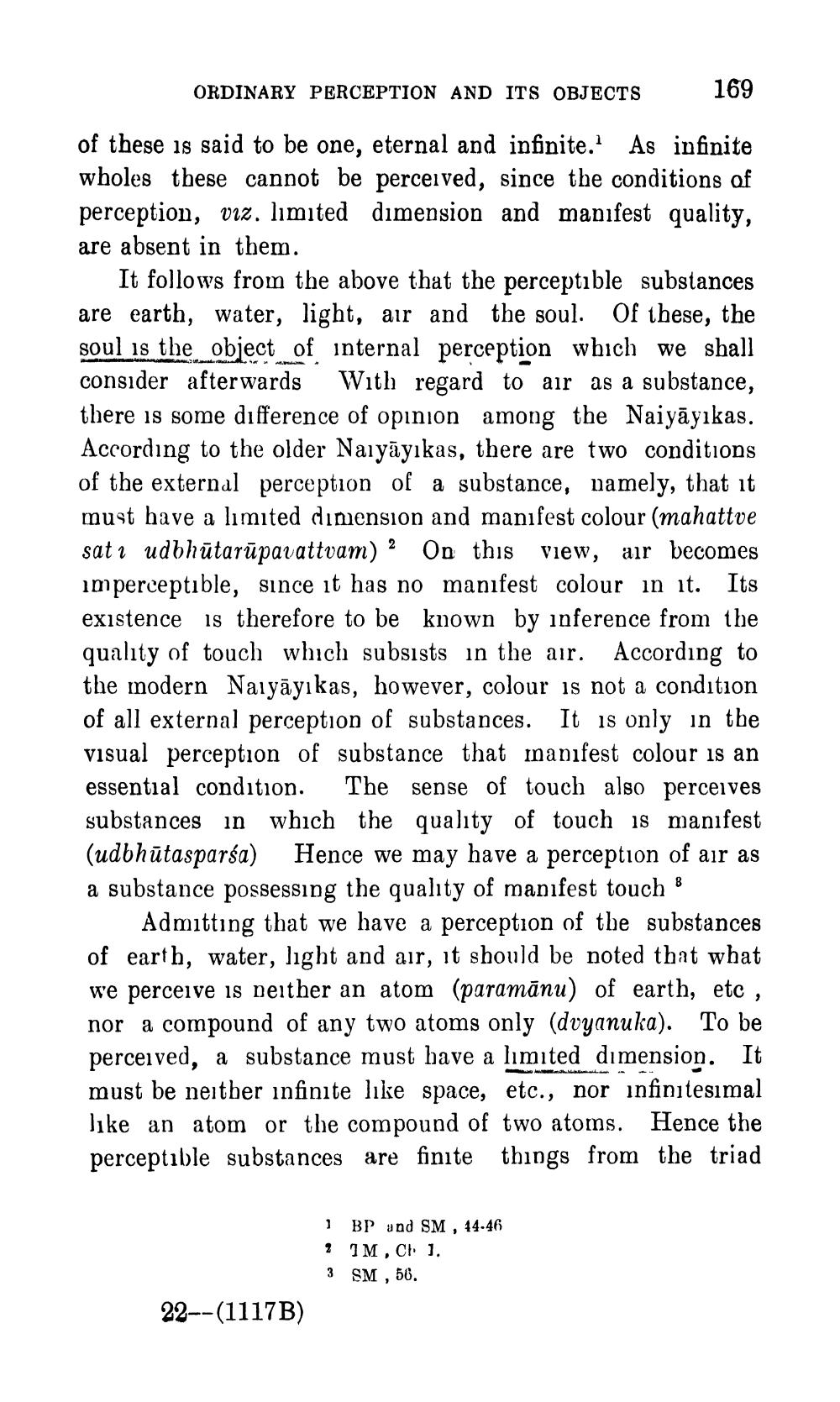________________
ORDINARY PERCEPTION AND ITS OBJECTS
of these is said to be one, eternal and infinite. As infinite wholes these cannot be perceived, since the conditions of perception, viz. limited dimension and manifest quality, are absent in them.
It follows from the above that the perceptible substances are earth, water, light, air and the soul. Of these, the soul is the object of internal perception which we shall consider afterwards With regard to air as a substance, there is some difference of opinion among the Naiyāyikas. According to the older Naiyayikas, there are two conditions of the external perception of a substance, namely, that it must have a limited dimension and manifest colour (mahattve sati udbhutarupavattvam) 2 On this view, air becomes imperceptible, since it has no manifest colour in it. Its existence is therefore to be known by inference from the quality of touch which subsists in the air. According to the modern Naiyayikas, however, colour is not a condition of all external perception of substances. It is only in the visual perception of substance that manifest colour is an essential condition. The sense of touch also perceives substances in which the quality of touch is manifest (udbhūtasparsa) Hence we may have a perception of air as a substance possessing the quality of manifest touch
Admitting that we have a perception of the substances of earth, water, light and air, it should be noted that what we perceive is neither an atom (paramānu) of earth, etc, nor a compound of any two atoms only (dvyanuka). To be perceived, a substance must have a limited dimension. It must be neither infinite like space, etc., nor infinitesimal like an atom or the compound of two atoms. Hence the perceptible substances are finite things from the triad
22--(1117B)
169
1
2 1M, Ch 1.
3
SM,
56.
BP and SM, 44-46




